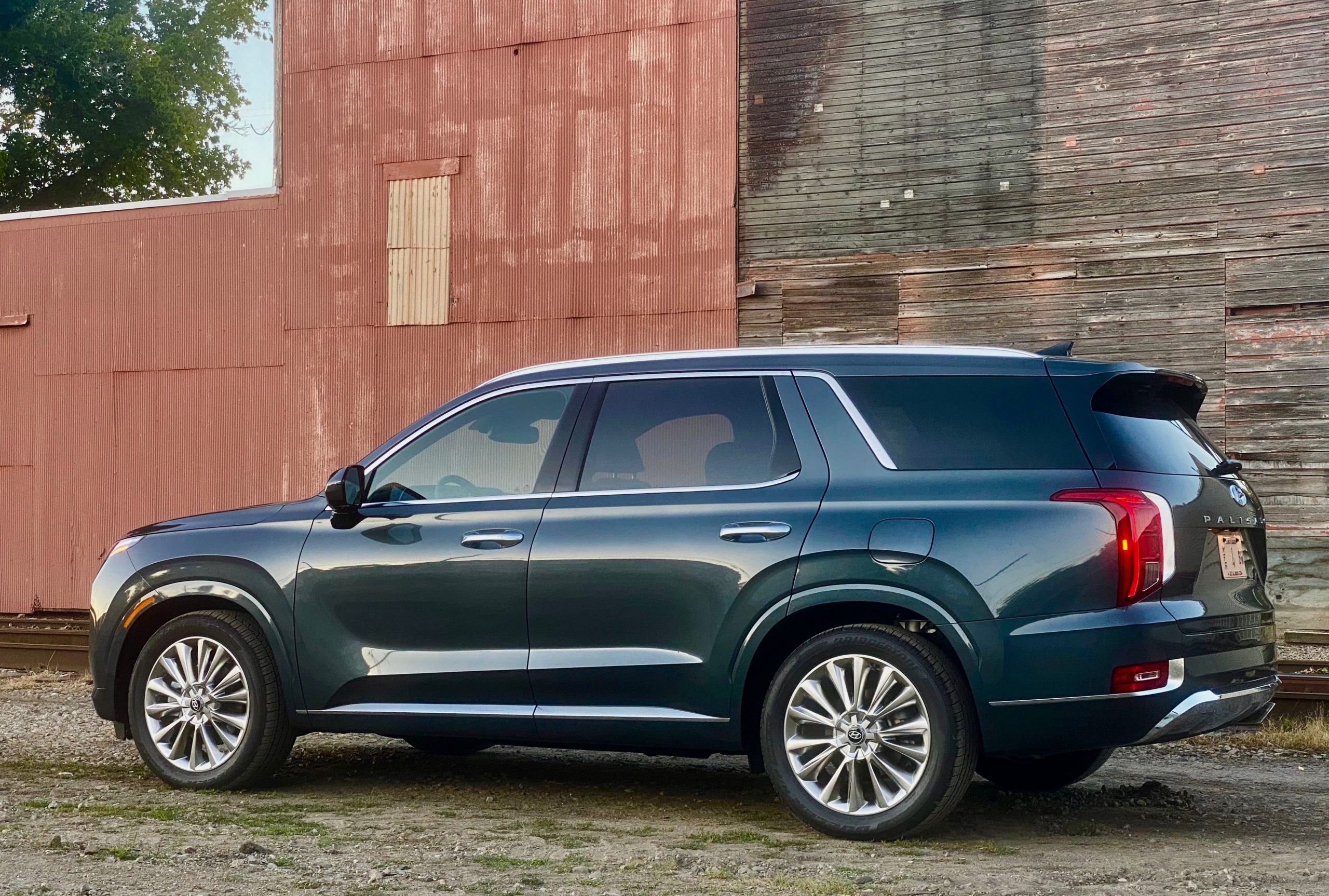Editor’s Note: For months we’ve talked to Chevrolet and GMC about access to the new Tahoe/Yukon for review. After multiple promises from both brands have left us empty handed we’re offering reviews of other manufacturers models instead. Our goal is to better educate buyers – something we can’t do with GM product if they will not work with us to provide it for testing.
When someone asked me about the price of the 2020 Hyundai Palisade I was driving, I hastily replied on feeling without consulting the Monroney sticker, “Oh, about $60,000”. That number was based on content, the feeling of luxury it invoked, the features this Palisade Limited was equipped with, its overall appearance and how it made me feel driving it. How wrong I was—the sticker read $47,905, well below a Traverse High Country.
2020 Hyundai Palisade- How could I be so wrong?
Quite easily, as it turns out. Price and value are—to me—the most important equation in any purchase whether it’s a fast-food hamburger or fine dining experience, a hotel, airline seat, or in this case a three-row mid-sized SUV.
Palisade is an SUV I felt was a true Euro-competitor and imbued with elegance and style, comfort and convenience, power and agility. So, in my mind I was driving a vehicle with a price tag thousands of dollars below its perceived value (and I have driven many hundreds of vehicles in my career).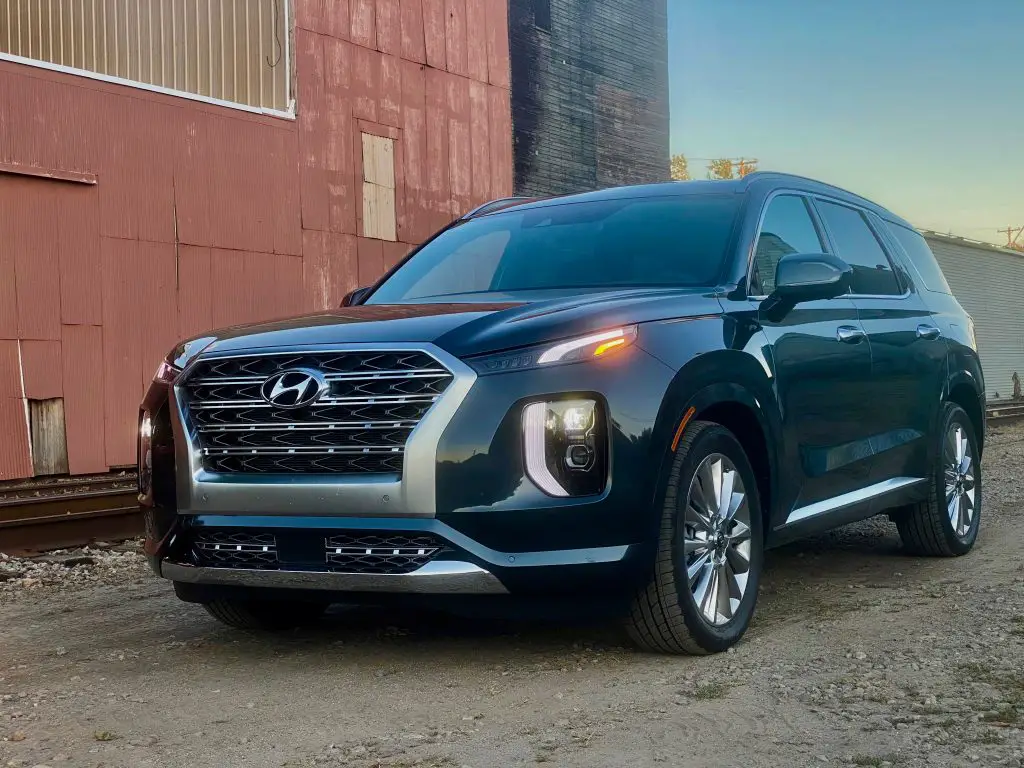
Well before its 2018 public debut in Los Angeles, I saw Palisade at Hyundai’s Technical Center in Ann Arbor, Michigan and was struck by its exterior design, from the large grille to novel headlamps. They were innovative and provide excellent lighting that includes automatic high beams (which you must consider for your next vehicle).
Upon finally driving this 2020 Palisade Limited AWD model (a base model is available for around $32,000), I first noted the quilted door panels and seating surfaces and how roomy it was. Frankly, the interior sets Palisade apart from many competitors with precise fit and finish, and as in the Limited, high-quality finishes. Also, Hyundai’s metrics say Palisade has more interior first and second row legroom than a Ford Explorer Platinum or Honda Pilot. It also has more cargo room behind the third row than Toyota’s Highlander or Nissan Pathfinder.

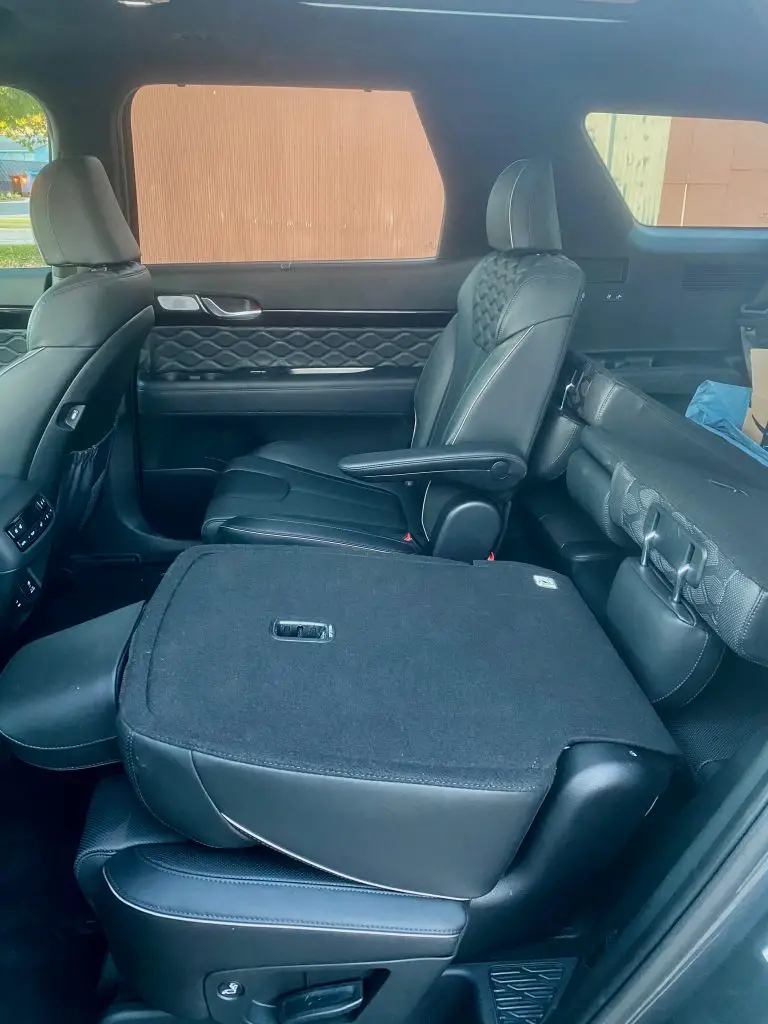
So, how does its interior stack up against a Yukon or Tahoe, which are about six inches longer in length and wheelbase? To me, both have a less sophisticated rotary control layout which is grand if you’re wearing mittens. However, the “future office” look of the Palisade is why Ram, for instance, is making such inroads in the last 24 months.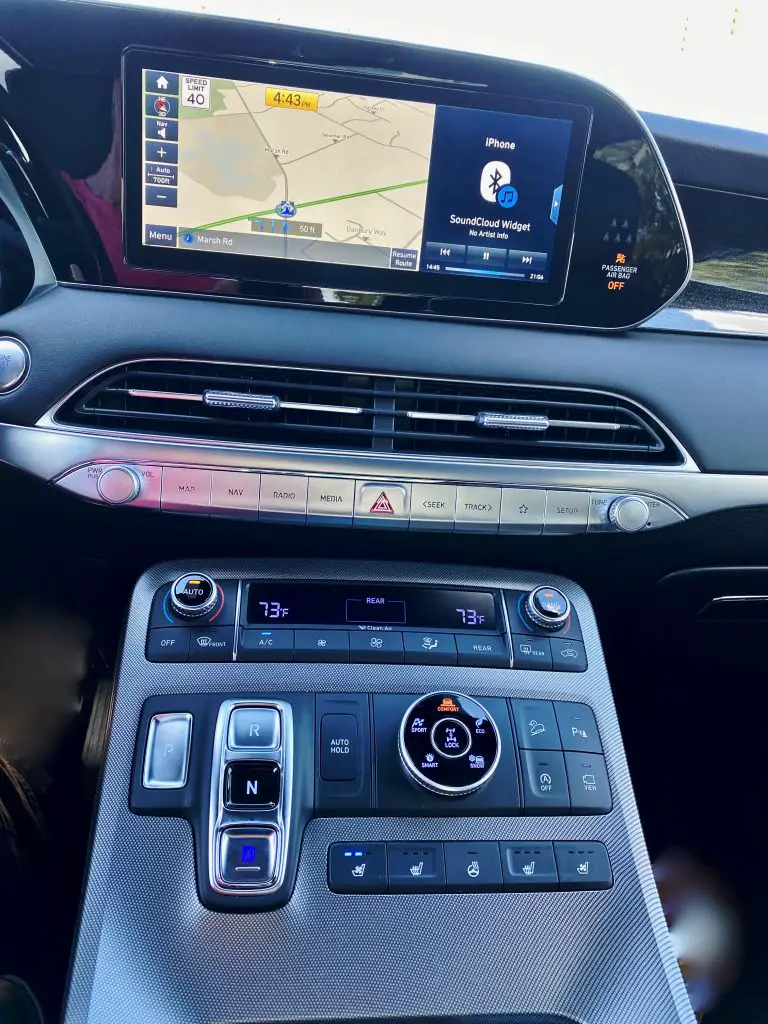
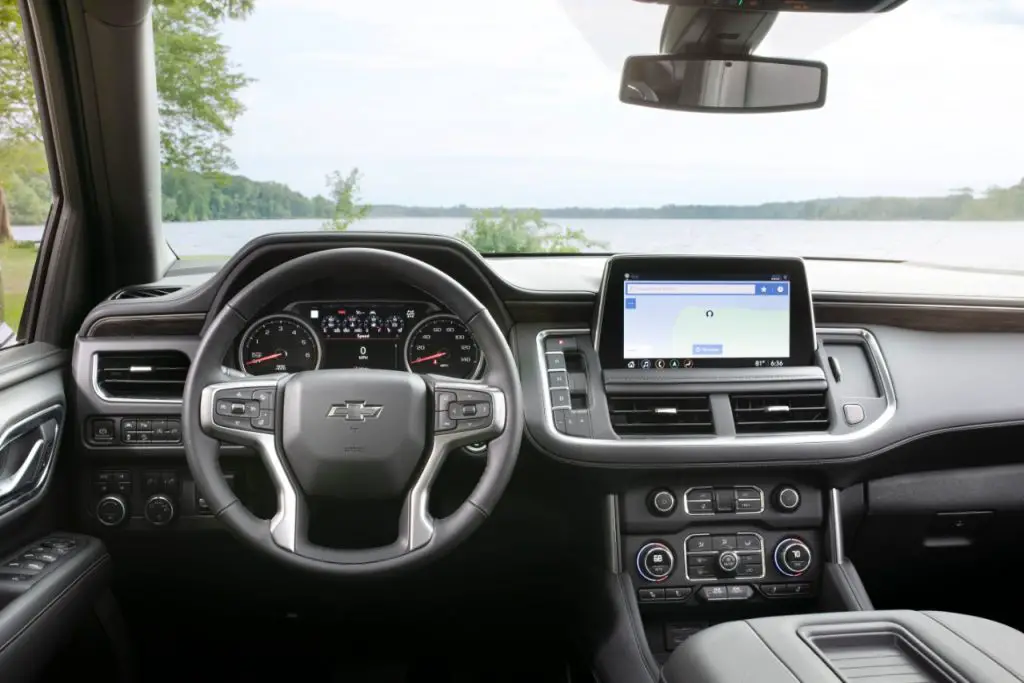
Hyundai’s metrics say Palisade has more interior first and second row legroom than a Ford Explorer Platinum or Honda Pilot. It also has more cargo room behind the third row than Toyota’s Highlander or Nissan Pathfinder. Let’s get back to reality. Compared to Yukon, Palisade has less front headroom (~2 inches), similar second row headroom and over three inches more rear headroom. For your legs, Palisade provides about a half-inch less front legroom, a half-inch more second row legroom, and a full three inches less third row legroom, perhaps defining if you’re regularly carrying a full passenger load.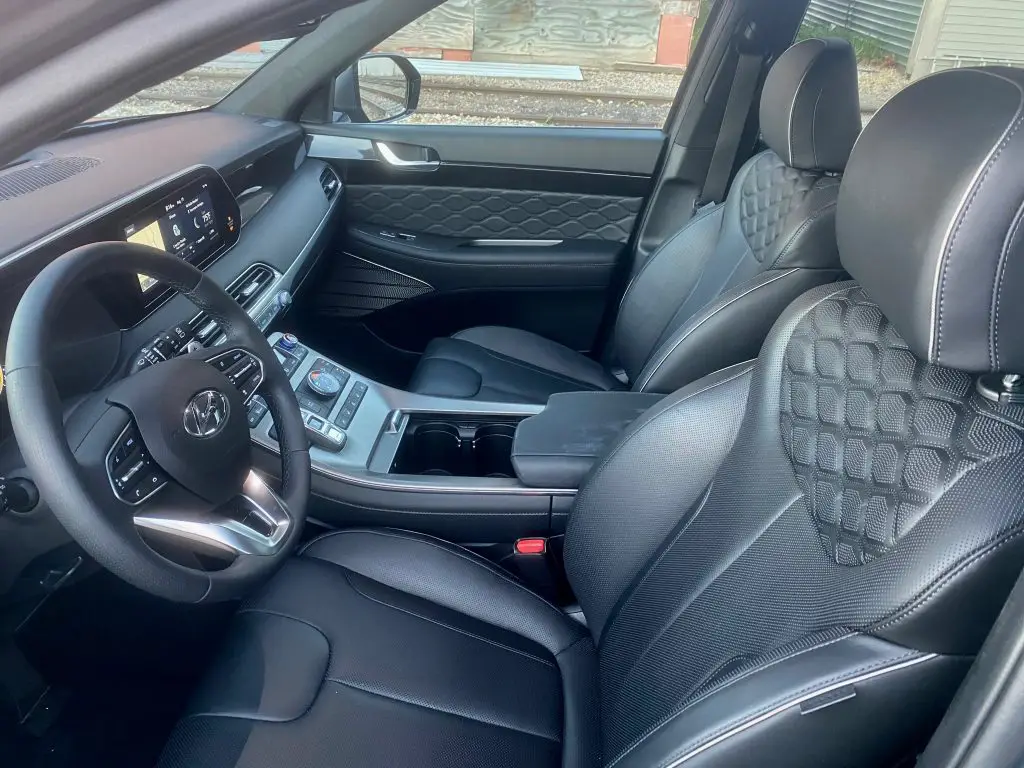
Continuing with interior pleasures—you spend more time looking at the dashboard than the rear quarter panel—the audio and navigation display is a larger than average 10.25-inch touchscreen in widescreen format, coupled with a 12.3-inch fully-digital TFT center instrument cluster that provides various view modes and differentiated drive mode illumination. That, of course, turns the IC from Comfort-blue to red in Sport mode and green in Eco. I’m not sure the animation (lower image) wouldn’t get tiresome at some point.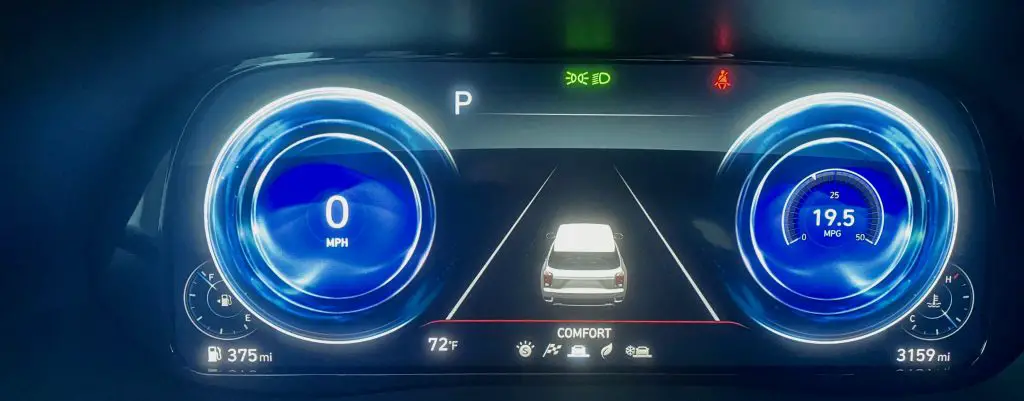
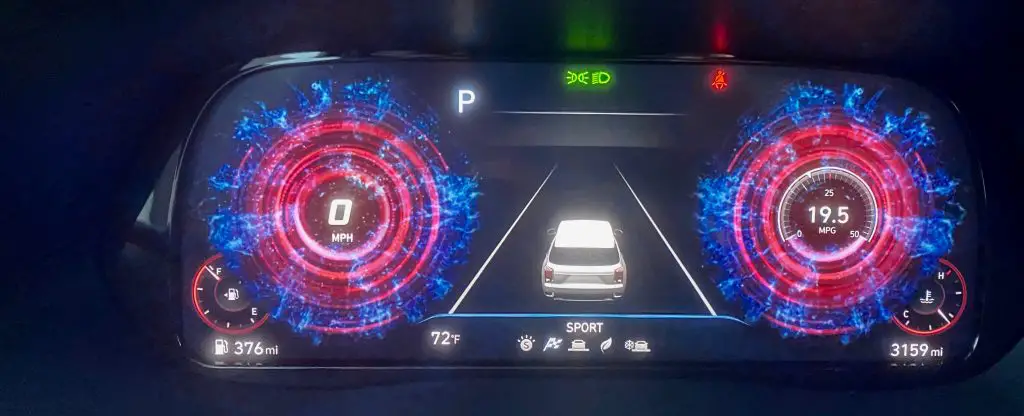
The Limited was equipped with a head-up display which I grew to like but could do without and a Harmon-Kardon 12-speaker sound system I’d hate to give up. As you can see, controls are simple to access, though there are now so many AWD selections you need a degree in engineering. The center console uses shift-by-wire controls to free up space for features drivers use most, like cup holders, and the shift-by-wire system automatically engages parking brakes on key-off and driver’s door open. It also makes room for more storage beneath.
The most interesting feature, startling if you’re not prepared (I was not) is the “Class-exclusive Blind View Monitor that complements the standard Blind Spot Collision Avoidance Assist, which provides easy-to-see body-side views whenever the turn signal is activated.” I drove out of my yard using backup cameras and turned left at the corner and digital video hell broke loose as the instrument panel lit up with a live video of my blind spot! Cool and potentially wonderful in a crowded or dangerous neighborhood.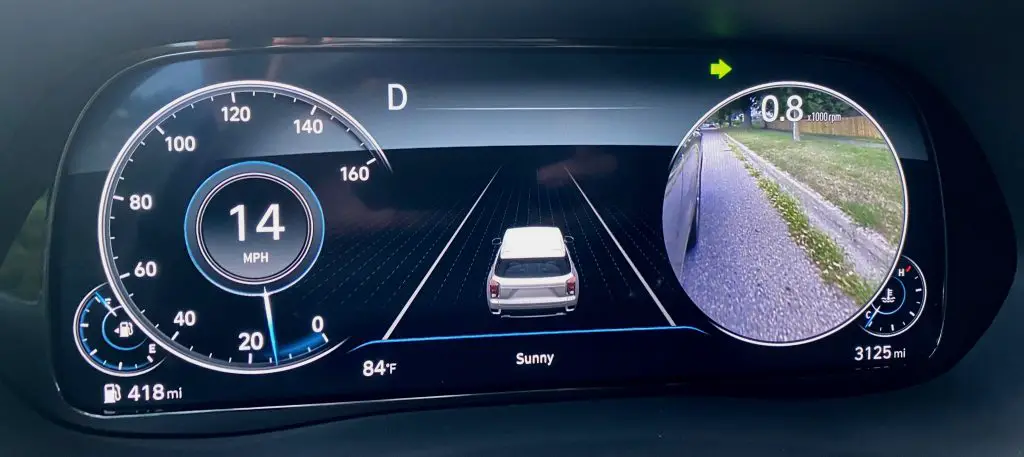
That’s the high spots, of course there’s much more. Like power folding third-row seats, easy-acting second row folding access seating, infotainment options like Apple Car Play and Android Auto and the list goes on with a full safety suite of forward collision assist, blind spot detection, driver attention warning, smart cruise with stop-and-start, rear cross traffic, etc.
The most interesting safety feature is Hyundai’s implementation of what’s called lane guidance or LKA, or lane keeping assist. It’s one of the best and most accurate I’ve experienced to date, not having used Cadillac’s Super Cruise. When on, it detects movement towards either side lane markers and gently, almost unnoticeably, keeps you centered. Competitive systems can be brutal, or just noisy with little assist. Hyundai shows you what hands-free driving will be in 10 years, smooth and effective (you must keep your hands on the wheel) and simple.
 Driving dynamics are darned good. Steering is not only accurate but delivers feedback and bad roads simply smooth out. Hyundai says “Palisade offers more standard horsepower than any other SUV in its competitive set (3.8L GDI V-6, 291 hp/262 lb.-ft.) and an unsurpassed level of torque” through its eight-speed automatic transmission. Which pales before the standard engine of a Yukon, the 5.3L V-8 with 355 horsepower and 383 lb.-ft of torque.
Driving dynamics are darned good. Steering is not only accurate but delivers feedback and bad roads simply smooth out. Hyundai says “Palisade offers more standard horsepower than any other SUV in its competitive set (3.8L GDI V-6, 291 hp/262 lb.-ft.) and an unsurpassed level of torque” through its eight-speed automatic transmission. Which pales before the standard engine of a Yukon, the 5.3L V-8 with 355 horsepower and 383 lb.-ft of torque.
Hyundai Palisade Bottom Line:
What’s Good: Pretty much everything
Needs Improvement: Add kick-to-open option for the rear hatch
Cool Hacks: Blind spot video display in driver’s instrument cluster.

